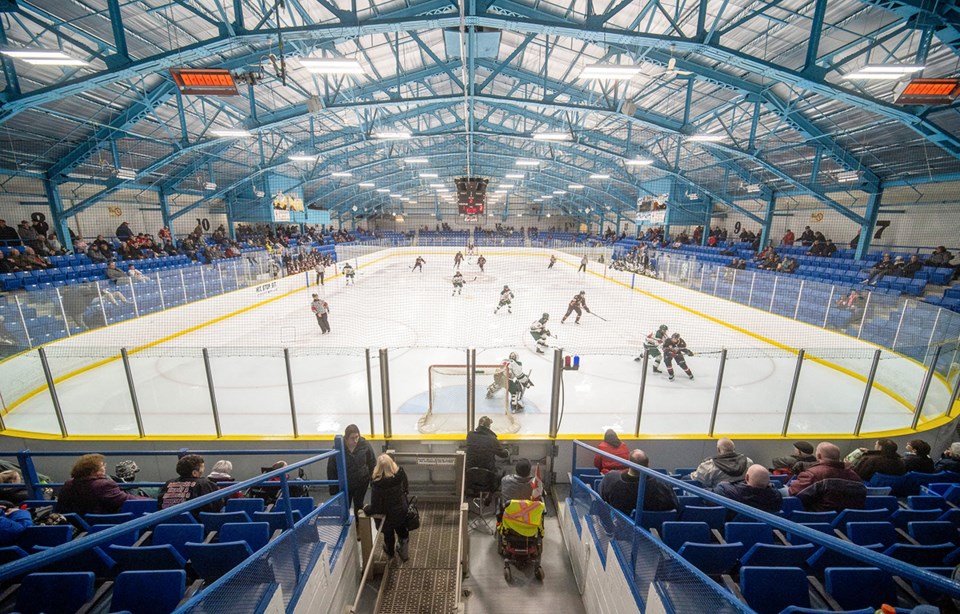Randy Evans & Ken Maczko
Editor’s note: This concludes a three-part series.
On Jan. 17, 1941, a game was played between St. Paul’s and the St. John’s Saints of the Sarnia Church Hockey League.
The tilt had a rather unChristian-like grittiness. According to one report it featured a “free for all scrap which spiced the proceedings.”
Such was the enthusiasm for hockey in 1940s Sarnia. By the end of the decade, no fewer than nine leagues were playing on natural ice rinks across the city and Pt. Edward.
At that time, all hockey games were played outdoors because the city’s only indoor rink, St. Andrews, had closed in 1936.
Unfortunately, the weather didn’t always co-operate. Warm winters would shorten hockey seasons, and in 1946 play didn’t begin until the third week of January. Soft ice also hindered the pace and quality of play. Rink maintenance costs rose.
It was recognized for decades that Sarnia’s hockey players and fans needed a covered rink, with predictable artificial ice.
One attempt had failed but then, in 1945, the Sarnia Kiwanis Club announced an ambitious proposal. It called for an arena equipped with the newest technology and seating for 2,400 for hockey and 5,000 for concerts. Estimated cost was $150,000, or about $2.2 million in today’s dollars.
“This will go over big,” predicted club past president Charles S. Maclean. “It is something long overdue in Sarnia.”
Sarnia council quickly and consistently balked at providing any financial assistance. So building the Sarnia Arena became a true citizen project.
Energized, perhaps, by the absence of political and bureaucratic interference, 237 members of the Kiwanis, Kinsmen, Lions, Optimists and Rotary clubs got together, pledged 10% of the estimated construction cost, and offered to fundraise the rest.
The service clubs promised not one dime would go to their own expenses.
The idea caught fire. Fundraising began throughout the city. Labour, industry and businesses donated generously, and Ontario kicked in $9,000.
For the rest, there was benefit dinners and door-to-door canvassing. A new car was raffled. At local schools, students contributed five cents or ten cents each week, depending on whether they attended elementary or high school.
When enough money was in hand, a contract was awarded to R.W. Mackay, a local building contractor. It was understood that construction would proceed only as and when funds were available.
As it happened, the cost of construction rose to $250,000 ($3.7 million today). At times, the money ran low, but doubled-down efforts were successfully instituted.
Most importantly, local tradesmen generously volunteered their time and skill to defray costs and keep the project moving along.
On Dec. 17, 1947, thousands of residents attended an open house to view the almost completed Sarnia Arena.
And in the New Year, the first teams took the ice to launch another chapter in Sarnia’s hockey history.
